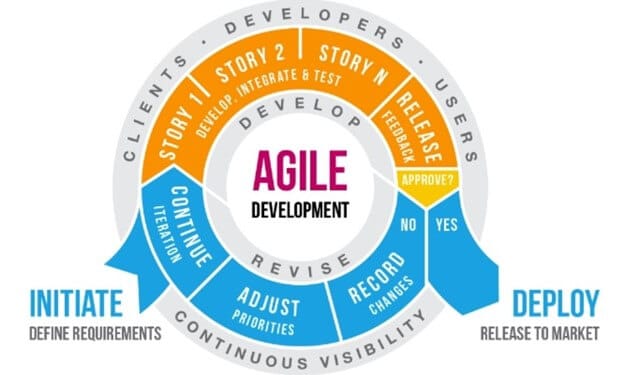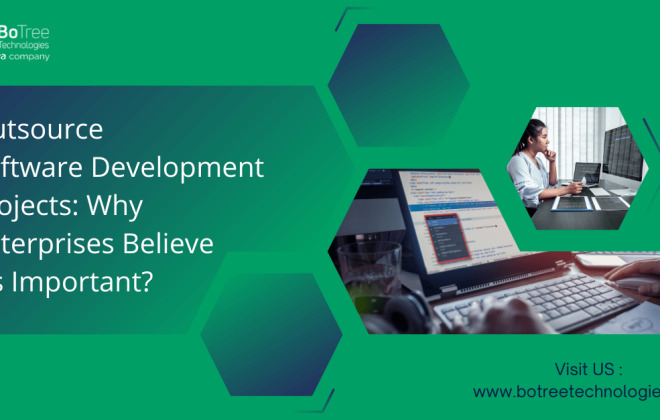
10 Top Software Development Best Practices for Developers in 2023
As software development continues to evolve, the industry is seeing a shift in the way we develop applications. In this guide, we will take a look at 2023’s top software development practices and technologies followed by an enterprise software development company. We’ve included some of our favorite articles from around the web on these subjects as well.
Software Development Best Practices for Developers
- Machine Learning:
- Artificial intelligence’s area and scope of machine learning is very broad. It is a technique for programming that enables computers to learn without being explicitly taught. In other words, using historical data, machine learning can be used to forecast future results.
- Predictive analytics, which uses algorithms and statistical models to analyze vast amounts of data about customers or potential clients, is a field in which machine learning is frequently used. This means that it aids businesses in making better decisions regarding their business operations. If you’re running an online business, for instance, and want to know what kind of products will sell best for your target market, you might use machine learning algorithms that look at previous purchases made by customers who are similar to them to get a sense of what might also perform best for them!
- Agile Development:
- Agile development is a software development methodology followed by a top software development company that wants to prioritize functioning software above comprehensive documentation and places higher importance on people and interactions than on processes and technologies. It is founded on the principles of constant focus on customer needs, quick iteration (quick feedback cycles), constant adaptation to changing requirements, and constant face-to-face communication between all team members (especially important in remote teams where there is no simple way for everyone to see what everyone else is doing).
- Organizations that want their goods or services to be available more quickly than is feasible with conventional processes usually employ agile methodologies. This can be accomplished by utilizing agile frameworks like Scrum or Kanban, which offer instructions on how teams should collaborate in order to produce high-quality products more quickly than they would under more conventional methods like waterfall or legacy models.

- Distributed Computing:
- As software development becomes more complex, distributed computing is becoming more and more necessary . The dissemination of calculations among various machines is the focus of the computer science discipline known as distributed computing. Along with better stability and security, it enables software solutions companies to build software’s that is more flexible and scalable.
- There are several software development best practices that can be used to improve the efficiency of distributed computing. Designing algorithms that are appropriate for dissemination comes first. This entails considering both the network’s characteristics and the resources that are accessible on each node. To ensure effective and dependable communication between nodes, it is also important to carefully choose a suitable communication protocol. Finally, in order to successfully manage and track the performance of the system, it is critical to have a good understanding of the system as a whole.
- Artificial Intelligence:
- Artificial intelligence is one of the most transformative technologies. With AI, businesses can automate tasks, improve efficiencies, and make better decisions.
- When it comes to software development, AI can be used to create more user-friendly interfaces, speed up testing and debugging processes, and even help developers write code.
- Here are some best practices for using AI in software development:
- Use AI to create more user-friendly interfaces.
- Speed up testing and debugging processes with AI.
- Help developers write code with AI.
- Use AI to improve software quality assurance
- Use AI to monitor software development processes.
- Cybersecurity:
- For software engineers, the dynamic nature of technology has created new difficulties. It’s critical to keep up with the most recent software development practices for development and cybersecurity to stay ahead of the curve.
- It takes a group to protect the internet. Although each firm has its own cybersecurity policies and procedures, integrating security into your software development life cycle is the best way to be ready for cyberattacks.
- Cybersecurity can be seen as a crucial component of the entire software development process, participating actively in every stage of your project, from requirement gathering to testing and deployment. Additionally, it’s critical that you have someone on staff who is knowledgeable on how to defend against internet dangers like phishing emails and malware infections on company computers should be protected by using antivirus software with internet protection. These antivirus software’s will protect your PC data from malwares and trojan horses. The more knowledge regarding cyber attack you have the more chances are you can keep your data secure.
- Every element of the software development life cycle should include consideration for cybersecurity, including the design, development, and testing phases, as well as the maintenance cycles, working with vendors, and even board meetings!
- Microservices:
- Since the advent of the Internet, microservices have significantly altered software development. They enable small teams to operate independently while preserving a common understanding of the product.
- Microservices are created as independent apps that talk to one another via APIs. It is simpler for developers to add new features without disrupting other components of your system because each microservice has its own codebase and deployment procedure. Additionally, you may do this without worrying about how it could affect other components of your application or infrastructure, allowing you to scale individual components independently (and vice versa).
Read more: Software Product Engineering Practices Every CTO Must Implement
- Rapid Prototyping and Innovation:
- The process of creating software is always changing and getting trickier. Organizations must consistently spend on research and development to stay on top of the newest trends and best practices. Prototyping is one of the key components of research and development.
- Organizations may quickly and affordably test new concepts through prototyping. It is an essential tool for innovation since it enables developers to test out novel ideas and evaluate how they perform in real-world settings. Additionally, prototyping enables businesses to get user input early in the development process, which can enhance the finished product.
- Prototyping can be done in a variety of ways, and an organization’s best course of action will depend on its particular requirements. However, test-driven development, extreme programming, and agile development are some of the most well-liked approaches.
- Additionally, organizations want to spend money on equipment and custom software that speed up prototyping. Both software and hardware tools fall under this category. For instance, 3D printers can be used to swiftly and efficiently produce physical prototypes. Additionally, there are many software platforms that enable developers to quickly and efficiently generate digital prototypes.
- Organizations may remain ahead of the curve and preserve a competitive edge by investing in rapid prototyping.
- Site Reliability Engineering:
- A high-performing, highly available, and scalable website or service is designed, built, and operated using a set of practices and methods known as site reliability engineering (SRE). The architecture and implementation of software systems that are essential to the business are the focus of the specialized position of SRE.
- SREs should concentrate on how their applications, such as websites that allow for client interaction or customer care portals, support these applications. These applications might be both mobile-first and desktop-based, so in order to ensure that everything runs smoothly for everyone involved, you’ll need an software development company which has familiarity with both platforms.
- Continuous Integration and Continuous Delivery (CI/CD):
- A technique for software development known as continuous integration and continuous delivery (CI/CD) has gained popularity in recent years. You can automate the software development, testing, and release processes with CI/CD. Agile teams benefit from this since it makes it possible for them to deliver new features more quickly than ever.
- Beyond making releases happen more quickly, CI/CD helps teams get to work on adding new features as soon as they’re finished. The primary cause of this is that developers have less work to do when they are just beginning with their project’s codebase than when it is further along. Some components are already ready for implementation or testing purposes (elements like unit tests).
- Cloud-native Technologies:
- Cloud-native technologies are those that are designed to run in the cloud. They are built to be scalable, reliable, and easy to manage. Cloud-native technologies include Platform as a Service (PaaS), Infrastructure as a Service (IaaS), and Software as a Service (SaaS).
- PaaS provides a platform for developers to build, test, and deploy applications in the cloud. IaaS provides infrastructure-level services such as storage, networking, and computing power. SaaS is a software application that is delivered over the internet.
- When selecting cloud-native technologies for your project, it’s important to consider your application’s requirements. You should also consider the capabilities of the different enterprise software solutions companies and choose the one that best meets your needs.
Checkout our Success Story: Online Restaurant Reservation System Case Study
Conclusion
The advantages of executing a good programming practice guideline speak for themselves in the long run. Developing an application built on the grounds of robust practices makes them more portable and scalable. It also reduces the extra time and money spent on identifying a bug and debugging an entire code written by someone else.
In the realm of enterprise software development, the advantages of implementing a solid programming practice guideline are evident in the long run. Partnering with a reputable enterprise software development company to build applications based on robust practices offers multiple benefits. It enhances portability and scalability while minimizing the resources invested in bug identification and debugging extensive code authored by others.
BoTree Technologies has ingrained the software development best practices in its development methodology. Our engineers ensure the development of the most robust applications following industry-specific best practices.
Contact us today for a FREE CONSULTATION.




